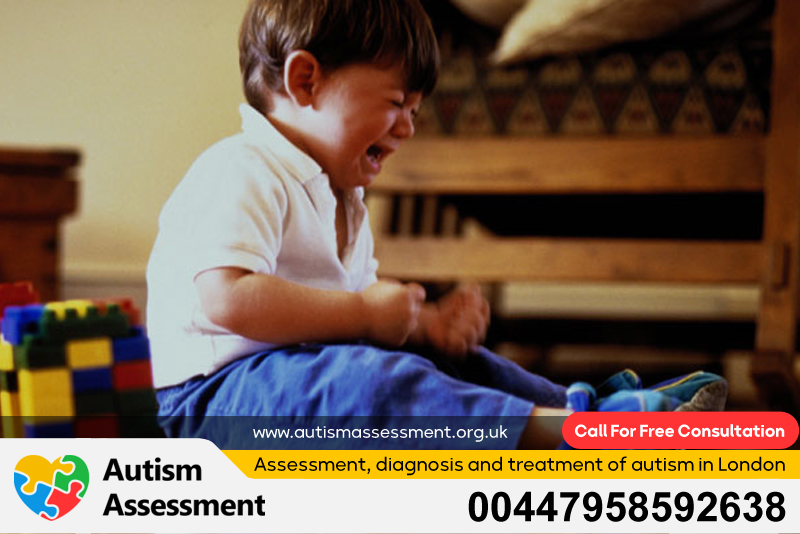Autism Spectrum Disorder (ASD) and Borderline Personality Disorder (BPD) are two distinct psychological conditions, each with unique characteristics, yet they can often be misdiagnosed or confused due to overlapping symptoms. Both disorders affect individuals in profound ways, influencing their relationships, emotions, and behaviors. A thorough understanding of each condition, including their similarities and differences, is crucial for accurate diagnosis, effective treatment, and the development of effective support strategies. This article explores the features of autism and BPD, discusses the potential for diagnostic confusion, and emphasizes the importance of a clear understanding of both conditions.
Autism Spectrum Disorder is a neurodevelopmental disorder typically diagnosed in childhood, though it can be recognized in individuals of any age. Key characteristics of autism include challenges in social communication, restrictive interests, and repetitive behaviors. Individuals with ASD may have difficulty understanding social cues, maintaining conversations, and developing relationships. They might also exhibit intense focus on specific interests or activities, which can lead to exceptional skills in those areas, often termed “splinter skills.” Due to their social communication challenges, individuals with autism may struggle in social settings, often feeling overwhelmed or anxious. These difficulties can lead to frustration and isolation, impacting their overall quality of life.
In contrast, Borderline Personality Disorder is a mental health condition characterized by pervasive patterns of instability in moods, self-image, behavior, and interpersonal relationships. Individuals with BPD often experience intense emotional responses and have difficulty regulating their emotions, leading to a pattern of extreme and fluctuating moods. They may engage in impulsive behaviors, such as self-harm or substance abuse, and often have a fear of abandonment, which can lead to tumultuous relationships. People with BPD may also have difficulty maintaining a stable sense of identity and may experience feelings of emptiness or intense anger. The emotional dysregulation seen in BPD can create significant turmoil in personal and social contexts.
Despite their distinctions, there is a potential for misdiagnosis between autism and BPD. For example, the intense emotional responses of individuals with BPD might be mistaken for the anxiety and frustration often seen in those with autism, particularly when social situations do not meet their needs or expectations. Additionally, the social difficulties experienced by individuals with autism might lead to behaviors that could be interpreted as manipulative or unstable, particularly in the context of relationships. This overlap can complicate the diagnostic process, highlighting the necessity for clinicians to conduct thorough evaluations that take into account the full range of symptoms and behaviors presented by the individual.
Understanding the differences between autism and BPD is essential for developing effective treatment strategies. Treatment for autism primarily focuses on behavioral interventions, communication skill development, and supportive therapies that enhance social understanding. Applied Behavior Analysis (ABA) is a widely used approach that reinforces positive behaviors and teaches new skills. Therapies that focus on developing social skills, such as Social Skills Training or social stories, can provide individuals with the tools to navigate social settings more successfully. Furthermore, family support and training can equip caregivers with effective strategies to manage challenges and promote positive interactions.
In contrast, treatment for BPD often involves therapeutic approaches such as Dialectical Behavior Therapy (DBT), which is designed to help individuals develop skills in emotional regulation, interpersonal effectiveness, distress tolerance, and mindfulness. Medications may also be used to treat specific symptoms associated with BPD, such as mood swings or anxiety. Support from mental health professionals is crucial, as individuals with BPD often benefit from a structured therapeutic environment where they can explore their emotions and develop coping strategies.
Building a supportive environment is vital for individuals with either condition. Families, friends, and educators play an essential role in understanding both autism and BPD, helping to create spaces where individuals can thrive. Accommodations, such as providing predictable routines for those with autism or ensuring safe spaces for emotional expression for those with BPD, can significantly enhance well-being. Joint training programs for families and educators that focus on both conditions can foster understanding and collaboration, leading to improved outcomes.
In conclusion, while Autism Spectrum Disorder and Borderline Personality Disorder are distinct conditions, their overlapping symptoms can create challenges in diagnosis and treatment. A clear understanding of each disorder is critical for implementing appropriate interventions and support strategies. By recognizing the unique challenges faced by individuals with autism and BPD, caregivers and mental health professionals can foster inclusive environments that promote emotional regulation, social understanding, and personal growth. As our knowledge of these complex conditions continues to evolve, so too does the importance of empathy and support for those navigating the intricacies of autism and BPD.



